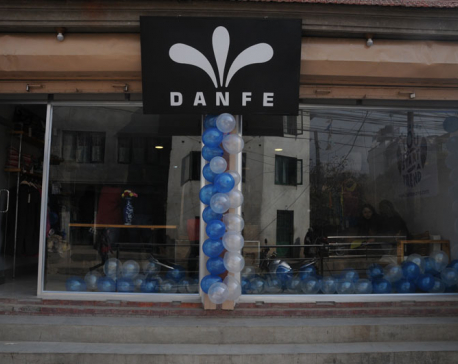
OR
Power producers concerned about local taxes
Published On: February 28, 2018 08:15 AM NPT By: Republica | @RepublicaNepal
KATHMANDU, Feb 28: Independent Power Producers’ Association Nepal (IPPAN) has asked the local government units not to impose any new tax on the hydropower projects before the government formulated clear laws of taxation on this sector in the federal setup.
The association has said that any new tax, in addition to the royalty that they are paying at the moment, would only complicate things before there was a clear government policy.
The appeal from the professional body of hydropower plant developers came after a local unit in Dolakha decided to levy Rs 1 million from Nepal Developer Limited (Charnawati Hydropower Project).
The village council of Shailung Rural Municipality had decided to impose ‘electricity tax’ on the company, on February 1.
IPPAN in a press statement on Monday has asked not to overburden the hydropower companies until the government came up with clear law in this matter.
Currently hydropower plants are paying an average 10 percent of the total revenue in royalty every year and additional 15 percent of tax to the government.
Twenty-five percent of such royalty is allotted for the local levels, according to the law. But the distribution of such royalty has not started yet, even after the country has embraced federal set up.
IPPAN’s president Shailendra Guragain said that they are already paying royalty worth up to 25 percent of the total annual revenue during the license period of 35 years.
“They should not impose such tax until the law is endorsed by the central government on distribution of the royalty,” added Guragain.
Spokesperson for the Ministry of Energy, Dinesh Ghimire, said that the local levels can impose tax by making laws but not arbitrarily as Shailung Rural Municipality has done.
“Such laws cannot be contradictory to the taxation law that the central government is going to make,” added Ghimire.
As per the existing system, the district development committees (DDC) of the region where a hydroelectric project is situated receives 50 percent of the royalty, which the DDC should spend mainly on rural electrification, whereas the remaining 50 percent goes to the government treasury. The hydropower plants are now paying royalty to the government in two categories. They pay two percent of the average tariff per unit (per kilowatt hour) and Rs 100 per kilowatt installed capacity per year for the first 15 years of generation (for commercial purpose). Thereafter, the rate of royalty is set at 10 percent of average tariff per unit (per kilowatt hour) and Rs 1,000 for each installed kilowatt per year.
According to previous royalty distribution mechanism, the plants’ home districts got 12 percent of the royalty allocated for the region and the remaining royalty was distributed equally among other districts in the region.
But the government has not yet made any royalty distribution modality except for the Inter-Governmental Financial management Act 2017 that was endorsed last year. It has allocated royalty percentage among three tiers of the governments, collected from the use of natural resource. The law says provinces and local levels each get 25 percent, whereas the remaining 50 percent goes to the central government’s treasury.
Hydropower is not the only sector where confusion of tax collection has emerged between the central and local levels. It has also been seen in other sectors such as tourism.
Investors are worried of further confrontation with the local levels where they are operating. The Federation of Nepalese Chambers of Commerce and Industry has repeatedly asked the government to clear the ambiguities surrounding taxation.
You May Like This

Local body staffers demand local election at the soonest
KATHMANDU, Jan 31: Various trade union leaders from the Local Body Employee Association, Nepal have urged the government to announce the... Read More...

‘Go Local, get local’ at Danfe
KATHMANDU, Dec 25: Danfe inaugurated its outlet in Jhamsikhel, Lalitpur on Friday. The shop focuses on concept of promoting Nepali made... Read More...

Govt registers bill for local polls under new local structures
KATHMANDU, Dec 15: While the major political parties are inching closer toward negotiations on holding local polls under the existing local... Read More...





Just In
- MoHP cautions docs working in govt hospitals not to work in private ones
- Over 400,000 tourists visited Mustang by road last year
- 19 hydropower projects to be showcased at investment summit
- Global oil and gold prices surge as Israel retaliates against Iran
- Sajha Yatayat cancels CEO appointment process for lack of candidates
- Govt padlocks Nepal Scouts’ property illegally occupied by NC lawmaker Deepak Khadka
- FWEAN meets with President Paudel to solicit support for women entrepreneurship
- Koshi provincial assembly passes resolution motion calling for special session by majority votes






_20220508065243.jpg)






Leave A Comment